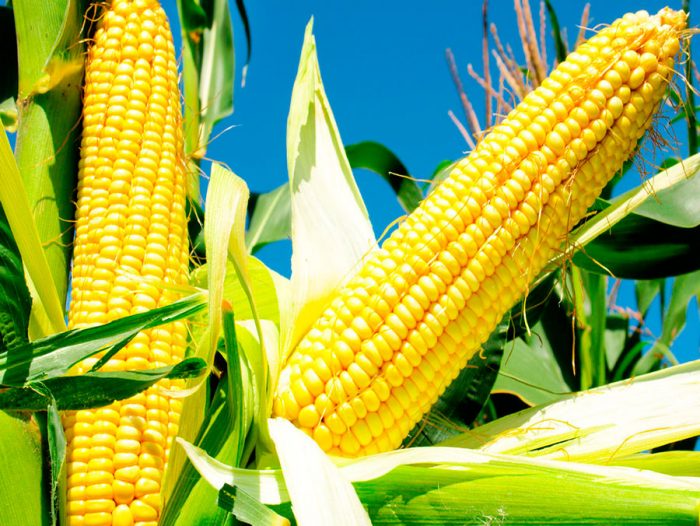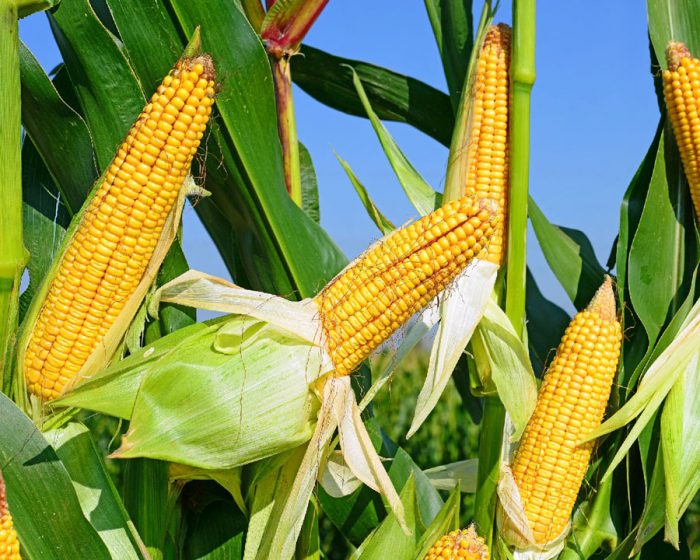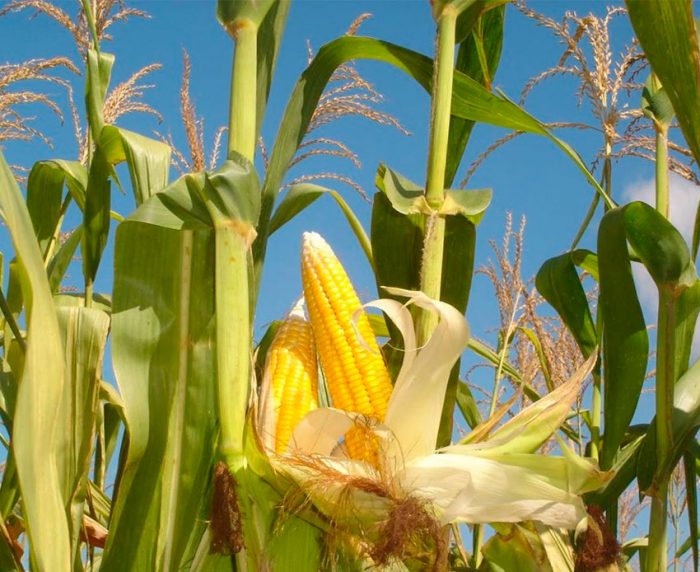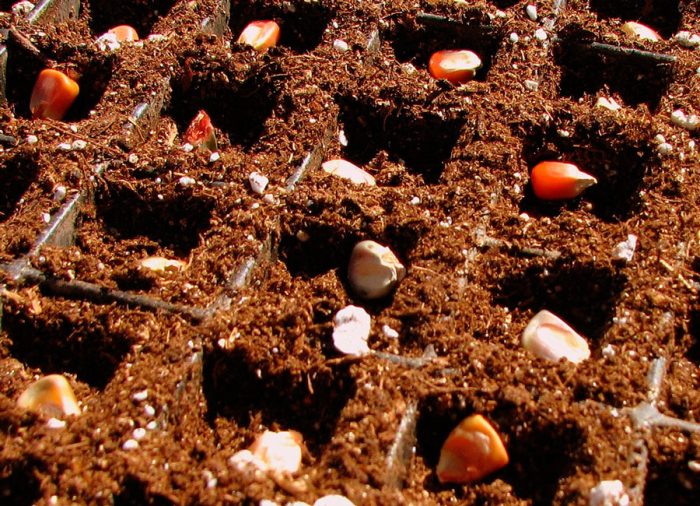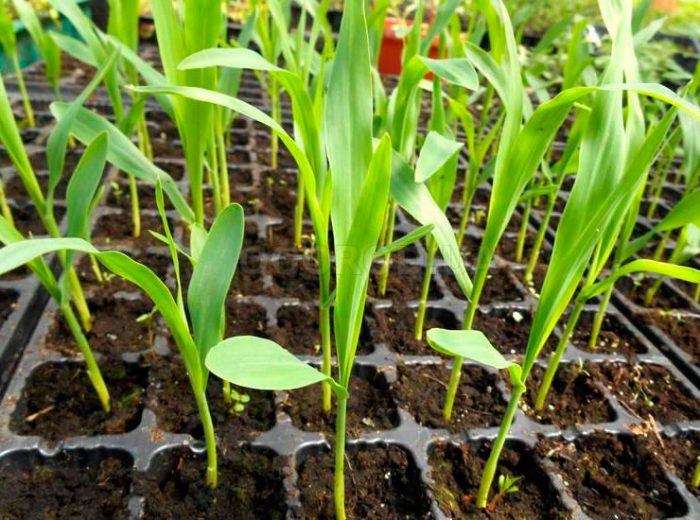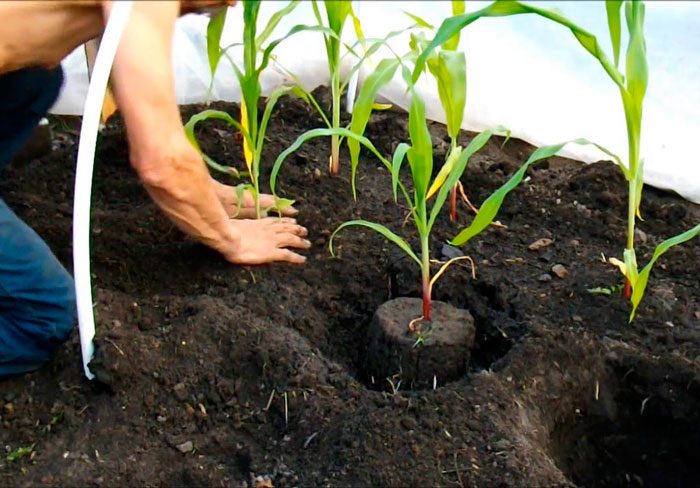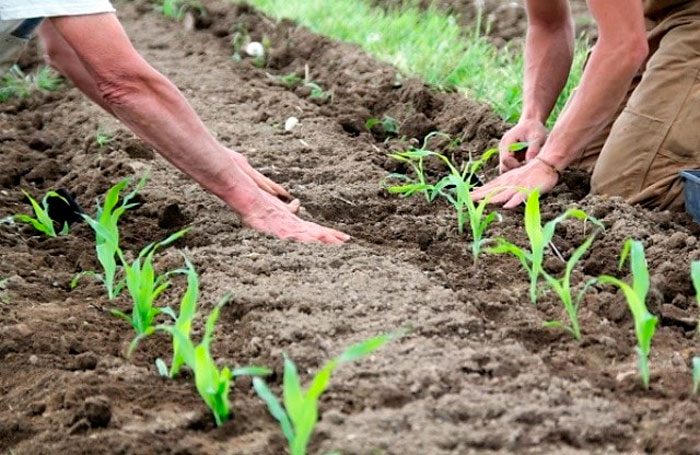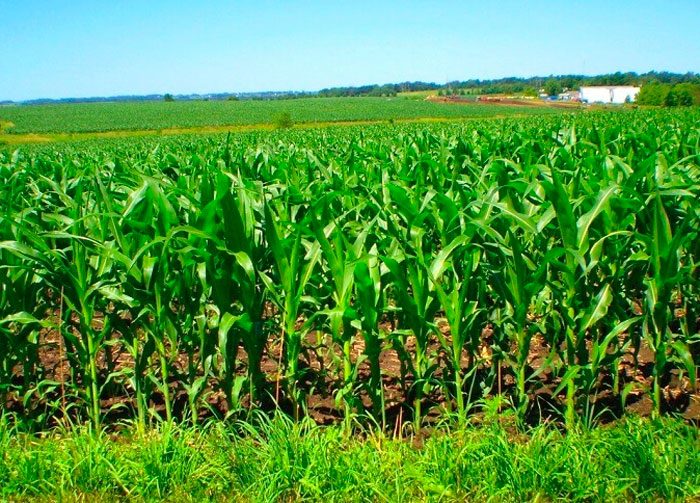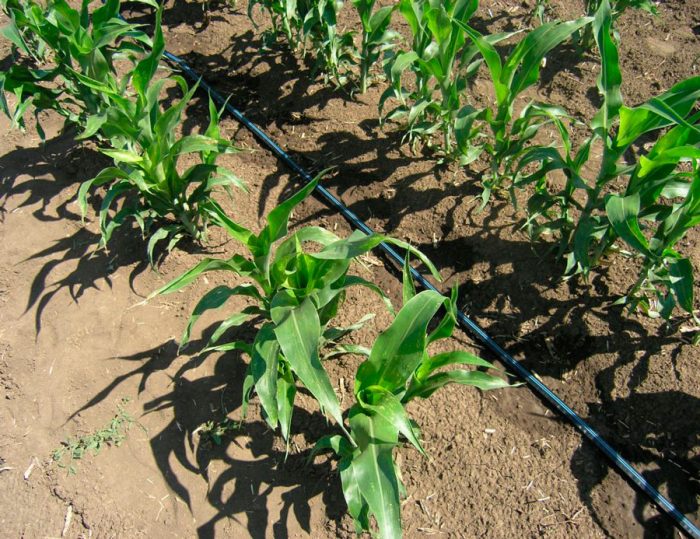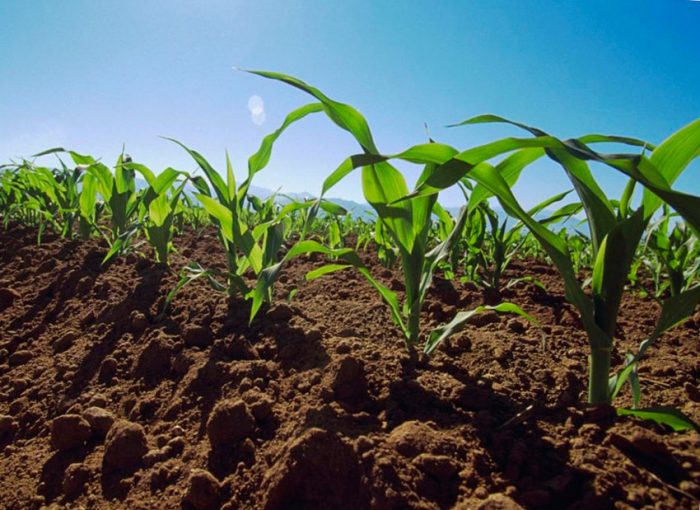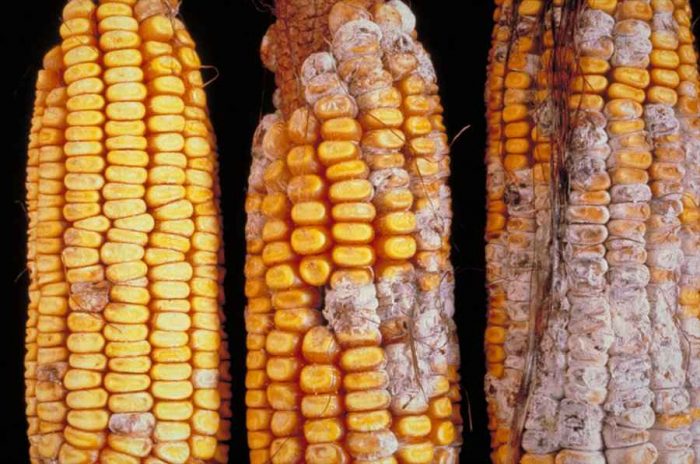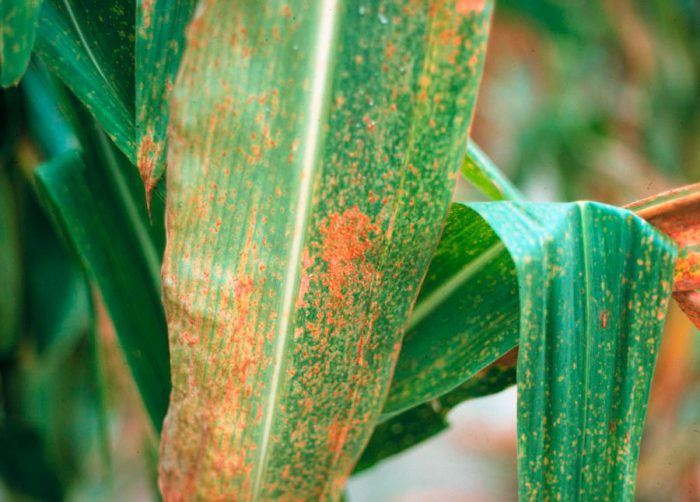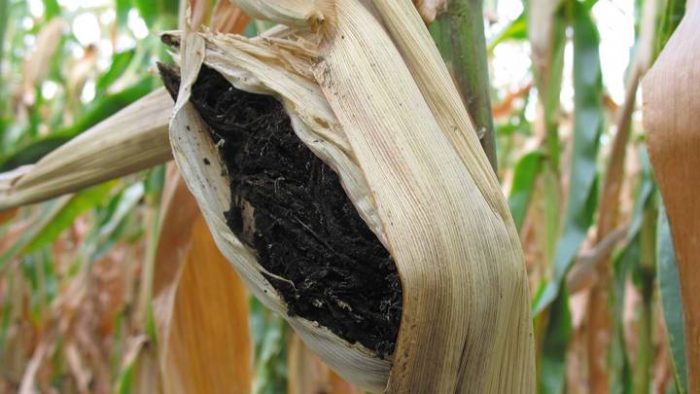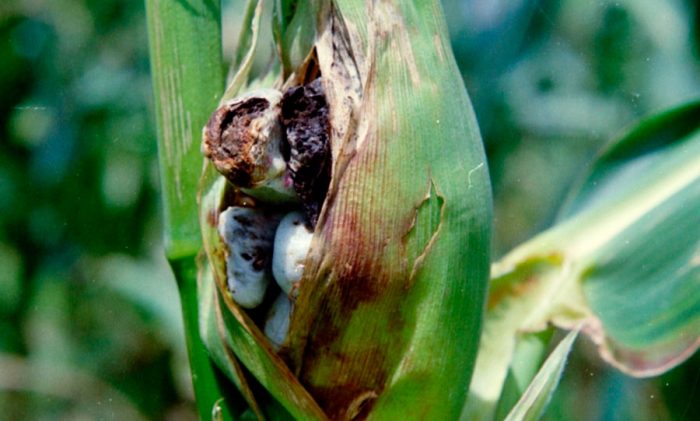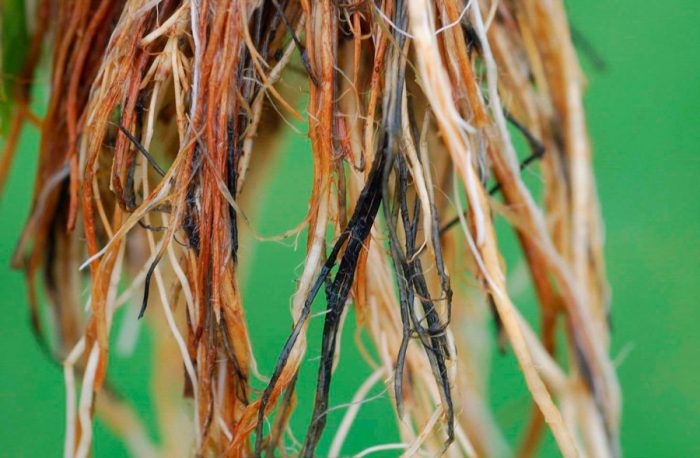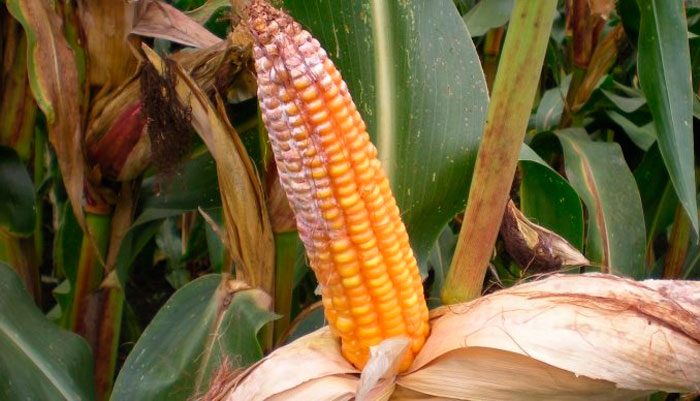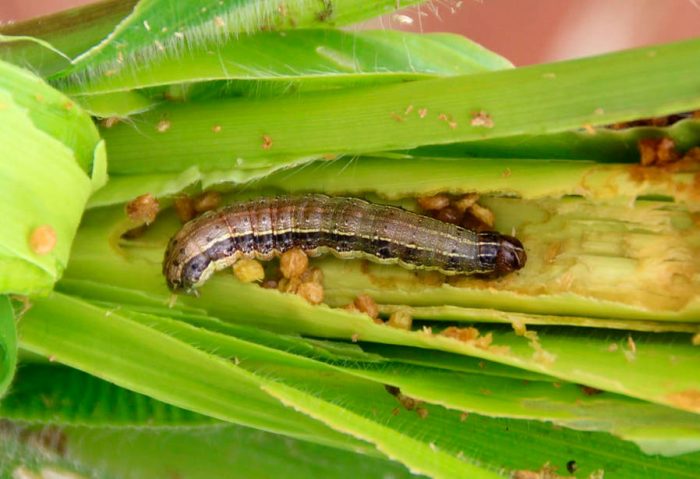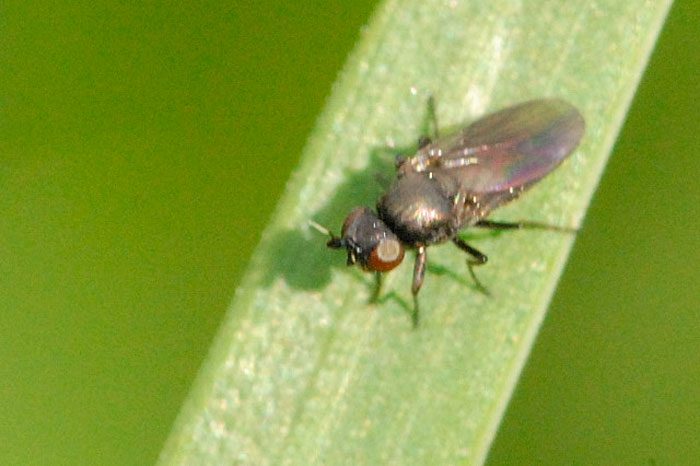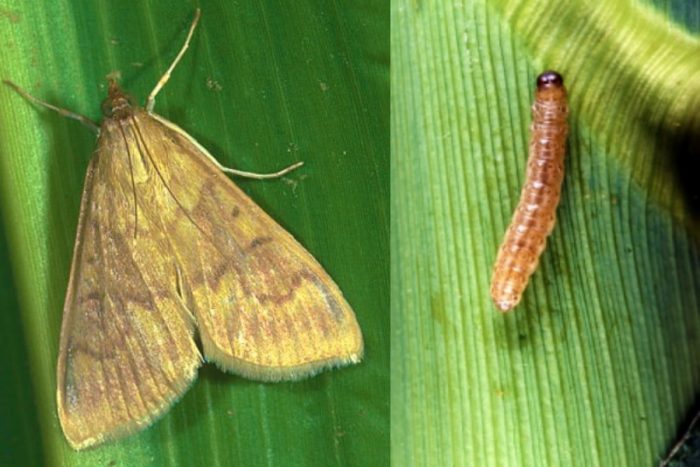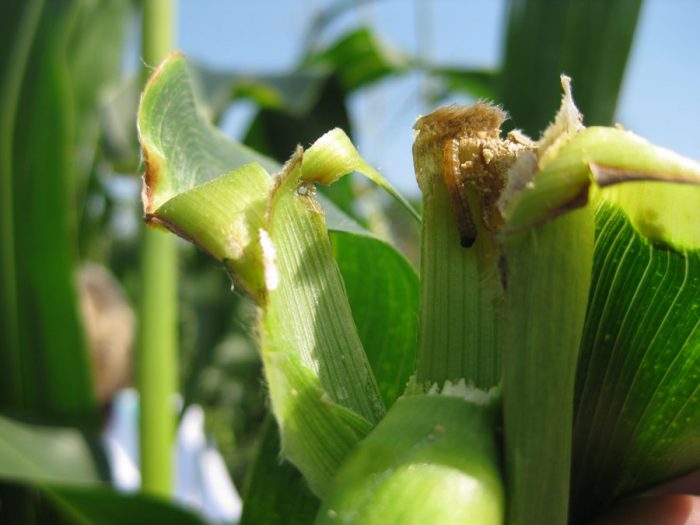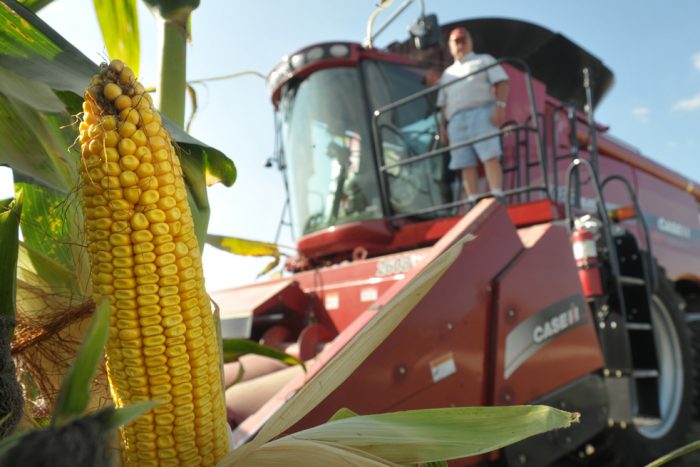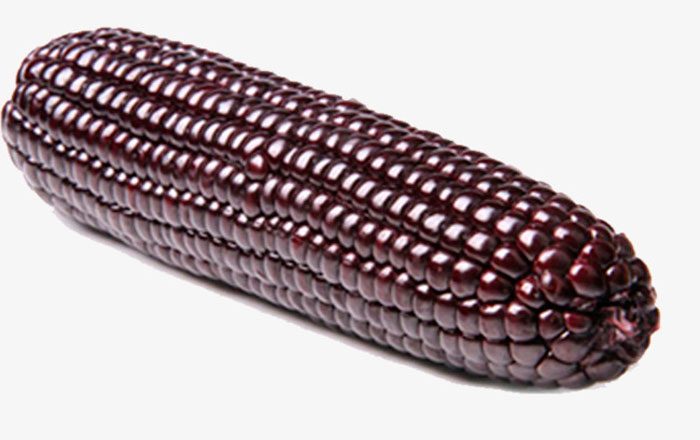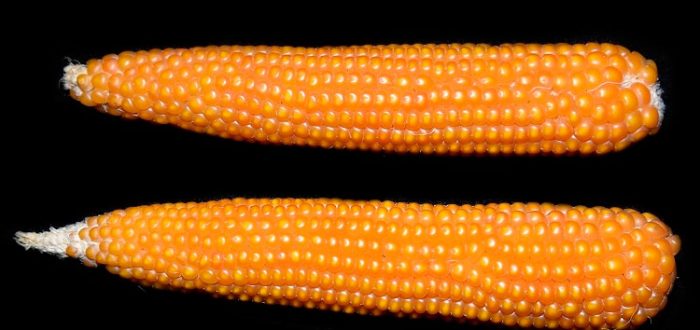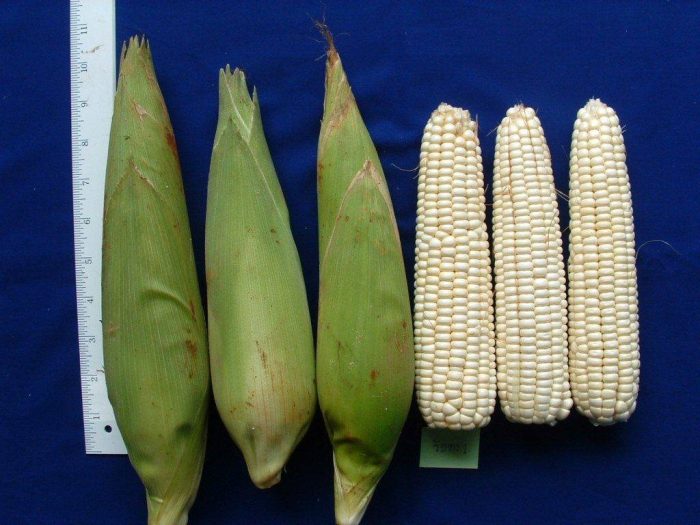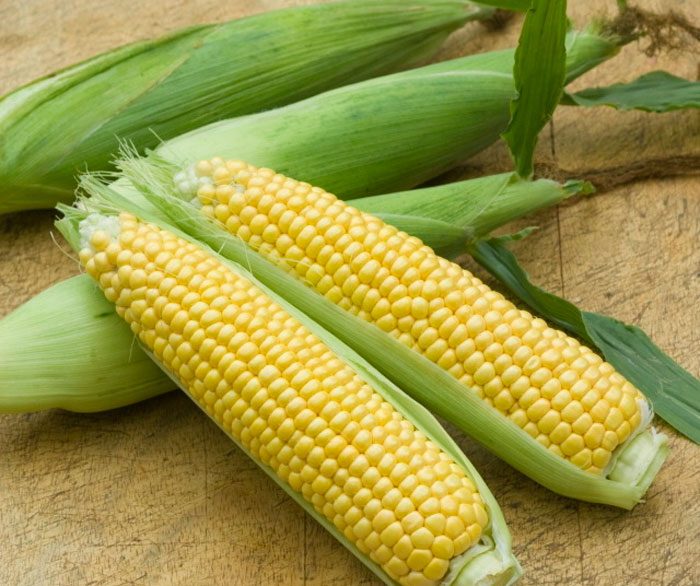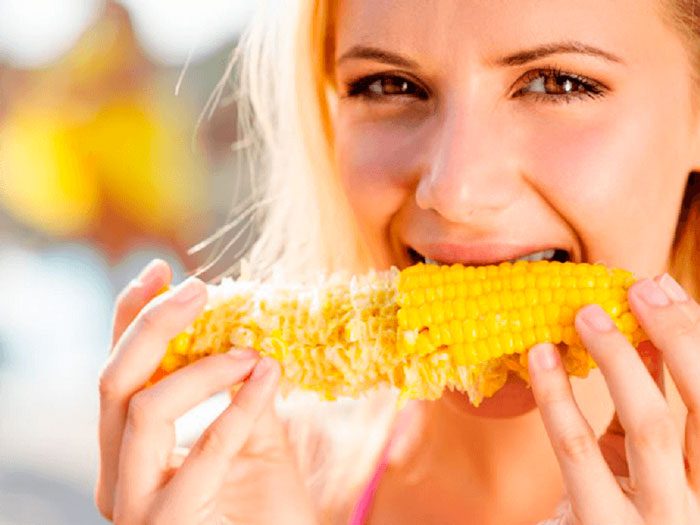The plant corn (Zea) belongs to the genus of cereals, which unites 6 species. However, only one species is cultivated - annual sweet corn (Zea mays), this cereal was the very first that humans began to grow. They began to cultivate it 7-12 thousand years ago, and it happened on the territory of modern Mexico. The spread of the culture across Mesoamerica began in the 15th century BC, at the same time people needed new varieties of corn, which pushed them to selection experiments. Thanks to this, a large number of varieties of such a plant were born in the 12-11th century BC. Modern scientists are confident that thanks to corn all the ancient civilizations that lived in America (Maya, Olmecs, Aztecs) were formed. The fact is that it is from the cultivation of corn that highly developed agriculture originates, and without it a developed society could not have formed. Even before the Europeans conquered America, corn spread to the territory of the Americas, where it was cultivated by the Iroquois from 10 to 16 AD. Such a culture was brought to Europe in the 15th century, after which it spread throughout the world.
Content
Brief description of cultivation
- Landing... Sowing corn seeds for seedlings is carried out in the first days of May, and in mid-June the plants are transplanted into open ground. Sowing seeds in open soil is carried out only after it warms up to 10-12 degrees.
- Illumination... Needs lots of bright sunlight.
- Priming. A slightly acidic or neutral loamy, sandy loam or peat soil is suitable.
- Watering... It is necessary to maintain soil moisture in the garden at a level of 70 to 80 percent, while drip irrigation per 1 bush should consume from one to two liters of water.After planting and before 7 leaf plates are formed on the plants, water should be moderate, and then watering becomes more abundant and frequent. After the threads on the cobs begin to darken, you will need to gradually reduce watering to moderate.
- Fertilizer... Such a culture requires nitrogen throughout the growing season until the seeds are fully ripe. However, most of it will need to be added during the formation of the inflorescences. Potassium is necessary for the plant from the beginning to the middle of the growing season, after which its amount in the fertilizer must be gradually reduced. Corn needs phosphorus constantly, but in relatively small quantities. She also needs zinc, copper, manganese and boron; a solution of these substances needs to be sprayed on the foliage of the bushes.
- Reproduction... Seeds.
- Harmful insects... Wireworms, false wireworms, moths, meadow and corn moths, and oat flies.
- Diseases... It is affected by fusarium on the cob and seedlings, helminthosporium, stem and pitya root rot, red rot on the cob, rust, dusty and blister smut.
Features of corn
Sweet corn is a herbaceous, vigorous plant that can grow up to three meters or more in height. The fibrous root system of the bushes is very well developed, and it goes into the ground to a depth of 100 to 150 cm. The supporting aerial roots are sometimes formed on the lower nodes of the stems, they give the bush more stability, and also feed it with water and necessary elements and substances. An incomplete erect stem reaches up to 70 mm in diameter. Large leaf plates of linear-lanceolate shape can be about 10 centimeters wide and up to 100 centimeters long. One bush can grow from 8 to 42 leaf plates. The flowers are unisexual. In the upper part of the stems, panicle-shaped inflorescences grow, consisting of male flowers, while the female ones are in the cobs, densely surrounded by leafy wrappers, they grow in the leaf sinuses. The weight of the cob can vary from 0.03 to 0.5 kg, and the length from 0.04 to 0.5 m, in diameter it can reach from 200 to 100 mm. On one bush, it is extremely rare that more than two ears grow, from the wrappers in the upper part of which pistil columns peep out, collected in a bun, outwardly similar to a tuft of hair. From male flowers, pollen, with the participation of the wind, falls on these columns, which leads to fertilization, as a result, large caryopsis are formed, which are the fruits of this plant. On the cob core, the weevils are placed in vertical rows, while they are very closely pressed against each other. The shape of the caryopsis can be cubic or round. About 1000 kernels can form in one ear, which can be pale red, purple, yellow, blue and almost black in color.
Growing corn from seeds
Sowing
Corn is grown exclusively from seeds, and there are two ways: seedless and through seedlings. It is possible to sow such a plant for seedlings in peat pots, reaching 12 centimeters in diameter, or in cassettes, while the volume of cells should be 45 cm2... To fill the containers, a substrate is used, consisting of a well-structured turf soil, which is combined with rotted humus (1: 1). To increase the moisture content of the soil mixture, you can add a little hydrogel to it, but it must be borne in mind that it can absorb up to 500 volumes of water. Thanks to the hydrogel, it will be necessary to water the seedlings 3-5 times less often, the fact is that the crystals that have absorbed the liquid release water gradually, while giving it to the substrate. Sowing seeds is carried out in the first days of May, but they need mandatory pre-sowing preparation.To do this, they must be placed in a moistened filter paper or cloth for 5–7 days and left at room temperature for germination. In each cell it is necessary to sow a couple of grains, and in a pot - 3 or 4 pieces. They are planted in a substrate to a depth of 30–40 mm, then the crops are watered with a lukewarm solution of Fundazol (4 grams for 1 bucket of water), after which they are placed on a well-lit window sill of southeast or east orientation.
Growing corn seedlings
Seedlings are extremely slow growth. At the same time, experts advise, immediately after the emergence of seedlings, to additionally illuminate them with a fluorescent lamp or phytolamp. During growth, seedlings will need 1–2 feeding, for this you can use Terraflex, Kemiru-hydra, Polyfid or Master. After the plants have 3 or 4 leaf plates, the seedlings must be thinned out, for this, a couple of the strongest seedlings are left in each pot, and one in the cells, while all the extra plants must be cut off with sharp scissors directly above the substrate surface. After they have formed 4 or 5 leaf plates, they begin to grow faster. When about 7 days remain before transplanting the plants into open soil, they begin to harden them. To do this, the bushes are transferred to fresh air every day, and you need to choose a shaded place. The increase in the duration of such procedures should be gradual, while in a week they should already be outside around the clock.
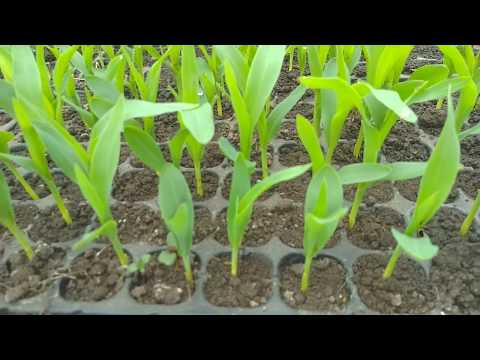

Watch this video on YouTube
Picking
The picking of corn seedlings is not carried out, since the seedlings react extremely negatively to this procedure.
Planting corn outdoors
What time to plant
Transplantation of corn seedlings is carried out in the first half of June, while the threat of return frosts should be left behind. It should also be remembered that if the air temperature drops to 3 degrees, this will slow down the growth of seedlings or it may stop altogether. If it is even colder outside, then this will cause the death of seedlings. Such a plant is distinguished by its thermophilicity, in this regard, for its cultivation, a well-lit area should be chosen that has reliable protection from gusts of wind.
Suitable soil
Best of all, such a culture grows in a loose, nutritious, air and moisture permeable chernozem, while its best predecessors are: potatoes, zucchini, cucumbers, cabbage, beets, tomatoes and squash. The preparation of the site should be done in the autumn, for this, all weeds are removed from it, deep digging is carried out, while rotted manure is introduced into the soil. If the soil is excessively heavy, then in the spring it must be loosened, for this, sawdust or straw cut into pieces are introduced into it, then the surface must be leveled.
Open ground landing rules
When the site is prepared, planting holes should be made on it, while the distance between them should be about 0.5 m.Then the seedlings are well watered and carefully transferred into the holes along with a lump of earth. Try not to damage the clod of earth during planting, as this can cause the bush to take root badly.
A planting scheme should be used that should take into account the peculiarities of the development of corn. The row spacing should be 150 cm, while melon crops can be planted in them later. In order to improve photosynthesis, bushes in adjacent rows must be planted in a checkerboard pattern. In addition, this planting scheme is very convenient for using drip irrigation.
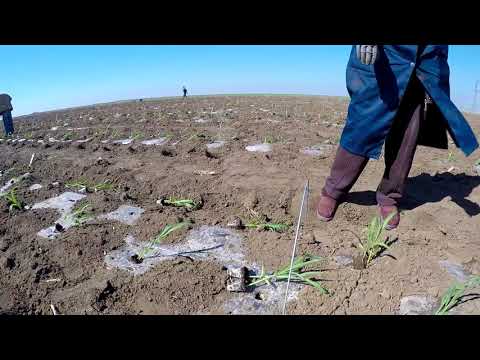

Watch this video on YouTube
What to grow after corn?
If during the growing season all the necessary fertilizing of this crop was carried out, then this site is perfect for the cultivation of dill, zucchini, basil, sage or beets.
Corn care
Inexperienced gardeners believe that corn is undemanding to care, and therefore they only water it and occasionally remove weeds from the site. But if they take care of it incorrectly, then this can cause a poor harvest, as well as depletion of the soil on the site. The planted seedlings must be well cared for until they get stronger, they need systematic weeding and watering. And also it must be spud without fail, in this case, the bushes will grow powerful adventitious roots in the lower part of the stem, thanks to which they will become more stable, and their growth and development will also improve. In addition, the surface of the soil in the aisles during the growing season must be loosened several times, while the corn must be fed in a timely manner, and also provide protection from harmful insects and diseases, and such a crop has a lot of them.
How to water
This culture is moisture-loving. During the day, 1 bush is able to absorb from 2 to 4 liters of water, but at the same time, liquid stagnation in the soil should be avoided, since in this case the root system will not have enough air, which will lead to its death, the growth of the bush will stop, and its foliage a purple tint will appear. In this case, the harvest will be at risk. The optimum soil moisture, which is recommended to be maintained constantly, is from 70 to 80 percent, which means that when watering 1 bush it is necessary to spend from 1 to 2 liters of liquid. If it is not possible to water the corn systematically, then experts advise frequent loosening of the soil surface near the bushes, in this case the water will remain in the soil for a longer time. This is probably why many gardeners call loosening "dry irrigation". When the seedlings are transplanted to the garden bed, it will need to be watered sparingly. However, when 7 leaf plates are formed on the plants, a gradual increase in the abundance and frequency of watering will be required, you should stop when the period of mass growth of panicles begins. After the darkening of the threads on the cobs begins, watering will need to be reduced to moderate, and this is also done gradually. Experienced gardeners recommend using a drip irrigation system to maintain optimal soil moisture in a corn bed, in this case, the liquid, as well as those nutrients that are dissolved in it, will go directly to the root system of the bushes. Thanks to this, you can save not only water and fertilizers, but also time and energy.
Fertilizer
When preparing a site for planting in the ground, it is recommended to apply all the necessary mineral fertilizers, as well as organic matter. But even if you do this, the bushes will still need to be fertilized throughout the growing season. This is due to the fact that in this plant the growth of green mass is observed throughout the entire growing season, in this regard, it is necessary to feed it from spring to the very autumn period. In addition, you need to take into account that corn needs certain nutrients during each growth period. If, during the preparation of the site, all those substances that the plant will need during the growing season are added to the soil, then due to their excessive number, the bushes can be very affected.
Nitrogen fertilization is carried out until the seeds ripen. However, most of all the bushes need this element from the moment of planting in open soil until the formation of inflorescences. From the beginning to the middle of the growing season, the plant actively absorbs potassium from the soil, while in the second half of the bushes this element goes back to the ground.Such a culture needs a small amount of phosphorus, but throughout the growing season. Phosphorus begins to be introduced into the ground already at the stage of preparation of the site, while after the ripening of the grains, this is stopped. In addition to the elements described above, this plant also needs trace elements, namely, zinc, manganese and a small amount of copper and boron. It should be borne in mind that in acidic soil there is very little calcium, and in alkaline soil there is a lack of copper and boron. If the bushes lack trace elements, then they must be fed with a nutrient solution on the foliage.
The first time, the bushes, as a rule, are fed during the formation of 3-4 leaf plates, and you need to use a solution of bird droppings or slurry. The second time they are fed with potassium salt (per 1 square meter from 15 to 20 grams), ammonium nitrate (per 1 square meter from 15 to 20 grams) and superphosphate (per 1 square meter from 30 to 50 grams). If there is a lack of any specific nutrients, the foliage of the bushes should be sprayed with a solution. If there is a delay in fertilization, this means that the corn needs boron, and if white stripes form on the surface of its leaf plates, then this indicates a lack of zinc.
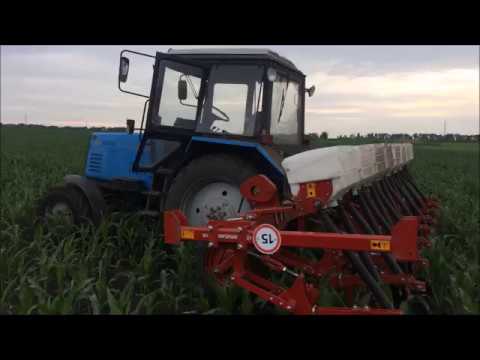

Watch this video on YouTube
Diseases and pests of corn
Diseases of corn with photos and names
Corn is affected by a very large number of diseases, and various harmful insects can also settle on it. Most often, such a plant is affected by fusarium on cobs and shoots, helminthosporiosis, stem and pitya root rot, red rot on cobs, rust, dusty and blister smut.
Fusarium on the cob
In agriculture, fusarium on the cob is very common, and if there is wet or rainy weather for a long time, an epidemic of this disease may occur. The first symptoms of such a disease can be detected only at the stage of milky ripeness of the ears, a bloom of a pale pink color forms on their surface, the grains that are very strongly affected become dark, their shine disappears, they become loose and their destruction occurs. Those grains that have not been affected by the disease can still be infected, so it is highly undesirable to use them as seed. For prophylaxis, seed material should be pickled before sowing.
Fusarium seedling
Also, corn is often affected by Fusarium seedlings. A pink or white bloom appears on the surface of diseased seeds, and if seedlings appear from them, they become brown and die. However, some plants may not die, in this case they will lag behind in development and growth from healthy specimens, their root system will be weakened, the stem is very fragile, and the leaf plates will dry out. If such a bush does not die during the growth process, then it will still not yield a harvest. Such a disease cannot be treated, therefore it is so important not to neglect preventive measures: before sowing, the seed is treated with a solution of a fungicidal agent, while the sowing itself must be carried out in a timely manner after the soil has warmed up well.
Helminthosporiosis
The ears and foliage can be affected by helminthosporiosis, as a result of which spindle-shaped specks of gray or brown appear on their surface, while they have a dark border. In some cases, a sooty bloom forms in the middle of such spots. The spots, increasing in size, gradually merge with each other, forming a shapeless focus, as a result the foliage dies off, and a gray bloom appears on the surface of the diseased ears, the grains become wrinkled, a dark mycelium appears on their surface, and they begin to rot. The causative agents of the disease are able to remain on the plant debris of the affected bushes for a long time, as well as on the grains.In order to prevent the appearance of such a disease, it is also necessary to observe some preventive measures: remember about the rules of crop rotation, the soil and seed must be treated with a solution of a fungicidal preparation before sowing, use hybrids resistant to this disease for growing, when the crop is harvested, the site should be cleaned of plant residues and weeds.
Stem rot
Stem rot is widespread in regions where there is frequent prolonged rainfall, while it is extremely rare in areas with a drier climate. When the disease begins to develop, specks of dark color appear on the internodes or on the lower part of the stem. Over time, the stem becomes soft, rot appears on it, and in the end it dies, while its core turns pink, and a large number of small perithecia are formed on the surface of the diseased tissues, which reach no more than 1 mm in diameter. To avoid the defeat of corn by this disease, it is necessary to adhere to all the same preventive measures, which were discussed in more detail above.
Corn rust
The causative agent of corn rust is most active in the second half of the summer period, while it continues to actively infect corn until the very end of the growing season. In the affected bushes, yellowish specks form on the seamy surface of the leaf plates, over time they become darker, after which pustules appear on their surface, inside which spores of about 1 mm mature. Under the pustules, the tissue of the leaf plate gradually dries up and breaks, while the spores fly in different directions and infect other parts of the bush, as well as new plants. In the fight against such a disease, only preventive measures will be effective, as well as pre-sowing treatment of seeds with a solution of a fungicidal preparation.
Dusty smut
An infectious disease such as head smut affects all crops, and it is especially common in the southern regions. The cobs and inflorescences of corn are affected by this disease. It is interesting that the causative agent of this disease is able to accumulate in the soil for many years, while it does not manifest itself in any way, however, after the appearance of favorable conditions, it becomes the cause of an epidemic that can ruin up to 40 percent of the entire corn crop. Affected inflorescences turn into a shapeless loose mass, and the ears become a dark lump. A bush affected at an early stage of development has a lag in growth, it bushes too much and differs markedly from healthy specimens. In some cases, the course of the disease is not so pronounced, but it still has a negative effect on the growth and development of the bush. In order to avoid being affected by such a disease, it is recommended for cultivation to choose those hybrids that are resistant to smut, and it is also necessary to adhere to the rules of crop rotation, in this case, there will be no accumulation of pathogenic microorganisms in the soil.
Bubble smut
The causative agent of blister smut is a basidal fungus. In the affected plant, a large number of vesicular formations appear on the foliage and ears. Panicles can also be affected, resulting in rough swellings that are shaped like pouches on the flowers. However, the largest galls form on the cobs as well as on the shoots. During harvesting, large galls crumble and, falling into the ground, winter there, and in the spring they again infect corn. The disease develops most actively during periods of drought, as well as if the plantings are heavily thickened. During a mass epidemic, due to this disease, up to half of the entire crop can die.In order to avoid smut damage, hybrids that are resistant to this disease should be chosen for cultivation, and it is also recommended to use a scheme that has been developed by specialists for planting such a crop. Before starting planting, the seed must be treated with a solution of a fungicidal preparation, and even after harvesting, the site must be freed from weeds and plant residues.
Pitious Root Rot
Most often, pitya root rot affects those bushes that grow on heavy soil and with too high humidity. The causative agent of this disease affects the bushes during the appearance of seedlings, while their root system suffers first of all, so constrictions form on the roots, while the root hairs are not formed at all. As a result, the roots rot and dry out, starting from the tips, over time the whole bush dies. With the course of the disease in a mild form, the color of the leaf plates changes, while the growth of the plant slows down. To cure sick corn, it is treated with phosphonates or fungicides, these funds can also be used for preventive purposes.
Red rot on the cob
Red rot of the cobs is especially dangerous, since it helps to reduce the yield of such a plant, and it is also capable of infecting both animals and people, while they have damage to nerve cells. The first symptoms of this disease appear during milky-waxy maturity, so a reddish-white bloom can be found on the upper ears, which spreads rapidly, while affecting the seeds and stem. In a diseased plant, seed destruction is observed, the wrapper turns brown, then it dries up, tightly covering the affected ear. The disease spreads most actively in wet weather at low temperatures during seed ripening. In order to prevent damage to corn, it is necessary to adhere to the following preventive measures: remember the rules of crop rotation; grow hybrids that are resistant to such a disease; sowing material needs mandatory pre-sowing preparation; control the amount of nitrogen introduced into the soil; the site requires a deep digging; after harvesting, the site must be cleared of weeds, as well as plant residues. You can cure diseased bushes by treating them with fungicides.
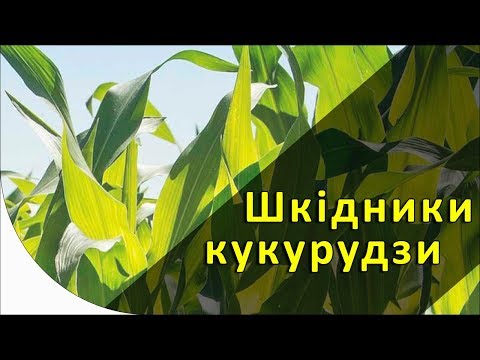

Watch this video on YouTube
Pests of corn with photos and names
The greatest danger to such a crop is represented by wireworms, false wireworms, scoops, meadow and corn moths and oat fly.
Wireworm
The larvae of darkling beetles (false wireworms) and the larvae of the click beetle (wireworms) love to feast on corn, they can also harm other vegetable crops (potatoes, carrots, beets, etc.). Such insects damage the underground part of the plant. If there are 90 or more pests on 1 square meter of a plot, then they destroy a fourth of the plants, and in some cases, all may die. The pests are most active during long rains at low temperatures or on irrigated fields. In order to prevent pests from multiplying, it is necessary to plow the area in the autumn, adhere to the rules of crop rotation, treat the seed with an insecticidal solution before sowing, and during the growing season, pheromone traps must be used against harmful insects.
Leaf-eating scoops
Leaf-eating scoops can still greatly harm corn. They can be found everywhere, while they damage all aerial parts of the bush. The most dangerous for such a crop are cotton, winter and meadow moths, since they can give 2-4 generations during one season.The first, as well as the second generation, as a rule, harm the leaf plates of the plant, while the third and fourth generations severely harm the ears, seriously injuring the reproductive organs, as a result of which the quality and quantity of the crop is significantly reduced. In the fight against scoops, as well as their larvae, agrotechnical methods show high efficiency, for this it is necessary to remove weeds in time, adhere to the rules of crop rotation, and after harvesting, it is necessary to plow the area. To get rid of the larvae, it is recommended to use pheromone traps.
Swedish oat fly
Such a pest as the Swedish oat fly lives in a moderately humid climate: in the area of irrigated fields, and even closer to the forest-steppe zone. During one season, 2 to 3 generations are born, which can harm the culture in the same way. In order to prevent the defeat of the bushes by such a pest, it is necessary to adhere to the following preventive measures: in the autumn, the site is subjected to deep digging or plowing with the obligatory subsequent compaction of the soil, it is necessary to sow seeds and plant seedlings on time, and weeds should also be systematically removed. When such a pest appears on the site, the bushes must be sprayed with an insecticidal solution.
Meadow moth
Most often, the meadow moth is found in the forest-steppe, steppe and taiga regions. During the season, 4 generations of the pest appear, while the first one, rapidly multiplying caterpillars, can most damage the bushes. It should be remembered that the number of this pest manifests itself in cycles, as a rule, once every 10-12 years, there is an invasion of moths, and there are so many of them that they can exterminate from 60 to 100 percent of the entire crop. Caterpillars destroy shoots and leaf blades not only of corn, but also legumes, sunflowers, potatoes, hemp, beets and parts of grain crops. In order to prevent the appearance of such an insect on the site, one must adhere to the same agrotechnical rules that are described above. In order to exterminate moths and caterpillars, you should use biological products.
Stem moth
The stem moth can also harm corn, it also damages soybeans, sorghum, hops, peppers and millet. The development of such a harmful insect takes place in three generations, while on the shoots and leaf plates of plants, it arranges egg-laying, and even the most severe frosts cannot harm the eggs. If there are moths on the bushes, then the leaf plates begin to turn yellow on it, as well as their median veins. As the disease progresses, the vein breaks, the plate itself bends and dies off. The threshold of harmfulness of the stem moth is 6 pieces per 1 square meter. To protect corn from such a pest, it is imperative to adhere to the rules of agricultural technology of this crop. When a pest appears, the bushes are treated with an insecticidal solution.
Cleaning and storage of corn
The harvest of sweet corn begins selectively after the ears have reached milk maturity. How do you know that the ear can already be removed? This is indicated by the following signs:
- drying of the outer layer of the wrapper and changing its color to pale green;
- the threads that peep out of the cob have become brown and slightly dried;
- if you press on the weevil, then white juice will appear from it;
- on the cob, the caryopses are smooth, have no dents or wrinkles, are yellow in color, and adhere very tightly to each other.
If the crop is harvested later than necessary, then the nutritional and taste qualities of the overripe ears will significantly decrease, the caryopses will become shriveled and will boil much worse. To prepare the harvest for laying for long-term storage, the ears are first cleaned, after which they are dried and cleaned of litter and grain impurities. Only completely whole ears are suitable for drying.You need to remove all the foliage from them, while leaving the wrapper, remove the corn silk, which are thin threads entangling the cob. Then the foliage of the prepared ears should be braided into a braid, then they should be hung from the ceiling in a dry room with good ventilation, where they should dry completely. To understand that the ear has dried well, it should be shaken a little, while the caryopses should start to pour out of it.
For long-term storage, the husked kernels should be placed in glass or plastic jars, and you can also use cloth bags or cardboard boxes for this. The grains that are intended for making popcorn must be placed in a plastic bag for storage, and then in the freezer, if necessary, frozen grains are poured into the pan. Milk corn, which is subsequently going to be boiled, is stored on the shelf of the refrigerator, where it can maintain its properties at an air temperature of 0 degrees for about 20 days. If it is kept warm, then in 24 hours the ear loses 1.5 percent or more of sugar (the warmer, the higher the loss). In order for dairy corn to be stored for a long time, it is recommended to freeze it or preserve it because in this case it will be possible to preserve its nutritional quality. If there is a lot of free space in the freezer, you can freeze whole ears. To prepare them for the bookmark, take a couple of large containers, while freshly boiled water is poured into one of them, and cold water with pieces of ice is poured into the second. First, the wrappers and stigmas are removed from the corn, after which it is removed for 2 minutes. immersed in freshly boiled water, and then transferred to ice and kept for the same time. Next, the cobs are laid out on a cloth to dry, and after each is wrapped with cling film, they are removed to the freezer. There they can be stored for about one and a half years without losing their quality.
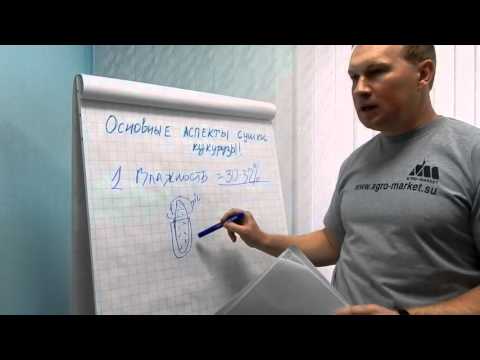

Watch this video on YouTube
Types and varieties of corn with photos and names
All varieties of cultivated corn are divided into 6 groups: dentate, waxy, flint, sugar, bursting and starchy.
Toothed corn (Zea mays indentata)
In the varieties of corn belonging to this group, the caryopses are elongated and large, a depression appears on their upper plane as they ripen, due to which the grains become outwardly similar to teeth. Plants in such varieties have strong stems, while they do not bush, and most of them are distinguished by high yields, but are late-ripening. This fodder crop is widely cultivated in the United States of America, while it is used as livestock feed, and is also processed into alcohol, flour and cereals.
Starchy corn (Zea mays amylacea)
This type of corn is one of the most ancient, while it is widely cultivated in America. Among all varieties, most are late-ripening, medium-sized bushes, they can be strongly and medium bushy. The top of the caryopses is convex, their surface is smooth and dull, and their inside is mealy and friable. These varieties are usually used to make starch and alcohol.
Flint corn (Zea mays indurata)
Such varieties are the most widespread in culture. The glossy smooth caryopsis has a convex apex, and its color can be yellow or white. These varieties are used for the manufacture of corn sticks and flakes, as well as cereals. The more popular are early maturing varieties with high yields, while they were obtained as a result of crossing dent corn and flint corn.
Burst corn (Zea mays everta)
This variety is also one of the most ancient. The varieties included in this group have one feature - the grains burst when heated. The grains of these varieties are smooth and glossy, and it is from them that popcorn is made.All varieties are divided into 2 subgroups, namely pearl barley and rice, they differ from each other in the shape and taste of the kernels. Lush leafy bushes grow a large number of relatively small ears, which are densely packed with grains. Such varieties are cultivated in almost all countries.
Waxy maize (Zea mays ceratina)
This group includes modified American varieties. Matte and smooth caryopsis on the outside is covered with a layer that is similar to hard wax. The inner part of caryopses has a mealy and sticky structure. The most widely cultivated varieties of this group, which are relatively few, are cultivated in China.
Sugar corn (Zea mays saccharata)
In agriculture, as well as in amateur vegetable growing, the varieties of this group are most popular. The main feature of these varieties is that a large amount of water-soluble sugars accumulates in ripening caryopses with a small starch content. These varieties are used for canning. The bushes of this variety are relatively low and bushy, with several ears growing on them. The color of the caryopses can be different, and it depends on the variety. Among them there is red, gold and black corn. There is also an unpopular hybrid that does not have a high value - nosed corn or sharp corn. There is also the maize of Karagua, which is cultivated in North America and used to make silage.
Below will be described in more detail those hybrids and varieties that are the best:
- Gourmet 121... This variety is distinguished by high productivity and resistance to diseases, the duration of the growing season is from 70 to 75 days. The height of the plant is about 150 cm, cylindrical ears grow on it, the length of which is about 20 cm. The elongated and wide kernels are very juicy and sweet. This corn is used for freezing, as well as for boiling.
- Dobrynya... The height of such an early-maturing hybrid with large ears is about 1.7 m, its caryopses are very sweet. Any soil is perfect for growing such corn, and it is also resistant to mosaic and rust.
- Pioneer... This hybrid is one of the best, related to siliceous corn. It is characterized by its resistance to frost and very high yield, which is observed in all weather conditions. But it is not very popular among gardeners, since the caryopses are not very tasty and not too sweet. Such corn is fed to livestock, and it is also used for processing.
- Spirit... This hybrid is resistant to harmful insects and diseases, as well as yield. Such a plant perfectly tolerates chemical treatments. The grains taste sweet.
- Syngenta... This Austrian hybrid is distinguished by its yield, and it also grows well in mid-latitude conditions. The tooth-shaped caryopses contain many nutrients. Such a plant is used to feed livestock, and cereals are also made from it.
- Early gold 401... This variety of medium ripening has undersized bushes. Delicious caryopses grow on cobs about 19 centimeters long. This corn is used for making cans.
- Oerlikon. This variety belongs to the popcorn group. Under the influence of high temperatures, the caryopses grow very much, the result is a large elastic popcorn, characterized by high taste. The caryopses contain a lot of sugar, which makes it different from other bursting varieties.
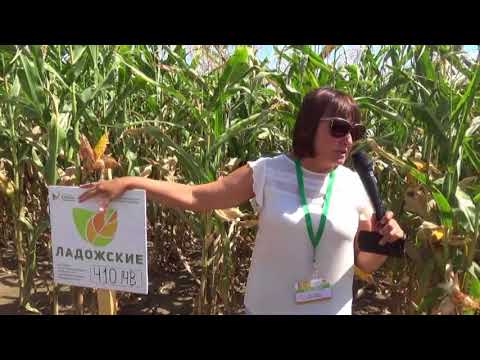

Watch this video on YouTube
Properties of corn: benefits and harms
Useful properties of corn
For a long time, people have known that corn has healing properties. In addition to starch, it contains phosphorus, nickel, potassium, copper and magnesium, vitamins D, C, K, PP and group B.And in corn silk is fatty oil, essential oil, saponins, gum-like and bitter glycoside-like substances, steroids stigmasterol and sitosterol. The composition of leaf plates includes esters of phenol carboxylic acids (for example, caffeic and ferulic), quercitin, flavonoids, rutin, and some glycosides.
Experts are confident that if corn grains are included in the daily diet, it will improve metabolic processes in the body and reduce the risk of developing cardiovascular diseases, stroke and diabetes. Nutritionists are convinced that corn is useful for people of age every day, as it helps to maintain and improve vision, because yellow caryopses contain carotenoids. It is recommended to use only tender milk grains in food, and overripe corn is much less absorbed by the body.
If you eat 1 large spoonful of corn oil in the morning and evening with meals, it will be an excellent prevention of migraines, asthma and skin diseases, and it also helps to increase the contraction of the walls of the gallbladder and increase its tone. This oil is valued for the fact that it contains unsaturated fatty acids (linolenic, linoleic, arachidonic), they take part in metabolic processes and the regulation of cholesterol metabolism. If people with coronary sclerosis regularly use this oil, it will significantly reduce the tendency to thrombus formation. The oil contains a large amount of biologically active phosphatides, which have a positive effect on the functioning of the brain tissues that regulate the amount of cholesterol in the body, and they also help to accumulate protein in it. If there are too few phosphatides in the body, then this leads to an increased accumulation of fats, as well as to the deposition of cholesterol in the tissues. This oil is also used in the treatment of atherosclerosis, as well as for its prevention.
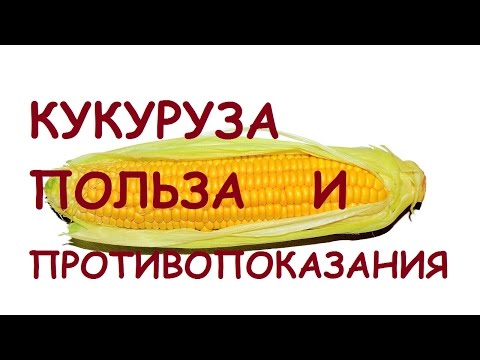

Watch this video on YouTube
Contraindications
Genetically modified corn, which is resistant to harmful insects, has pollen containing dangerous toxic substances that can kill any insect. In this regard, it is not recommended to eat such weevils until the experts understand whether they pose a danger to humans. It should be remembered that if there are such "food mutants", then the risk of obesity, allergies, and even other consequences of metabolic disorders will increase.
Since corn promotes intestinal bloating, it is worth refraining from eating it in case of exacerbation of gastric ulcer and duodenal ulcer. It is not recommended to include such a plant in your diet with increased blood clotting and thrombophlebitis, and even with low body weight, since corn reduces appetite. Corn oil should not be eaten by obese people, and even if there is an individual intolerance to the product.

